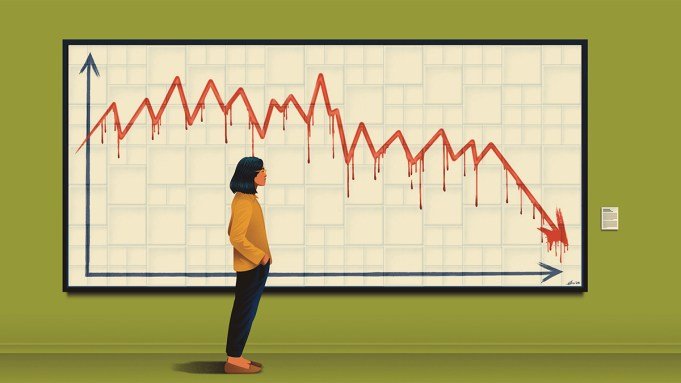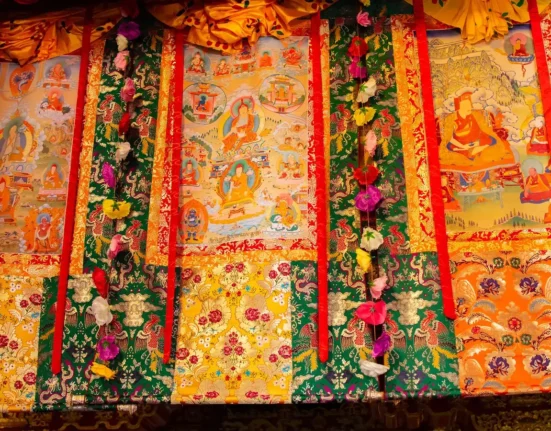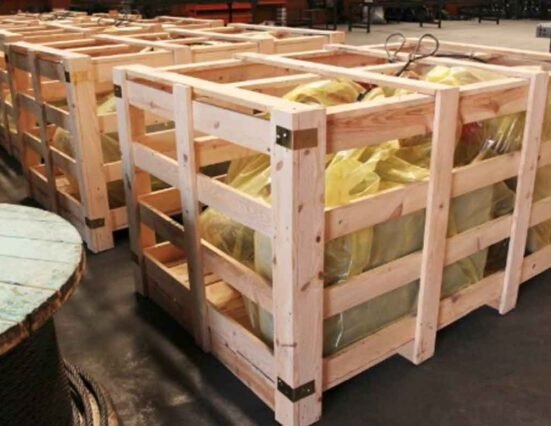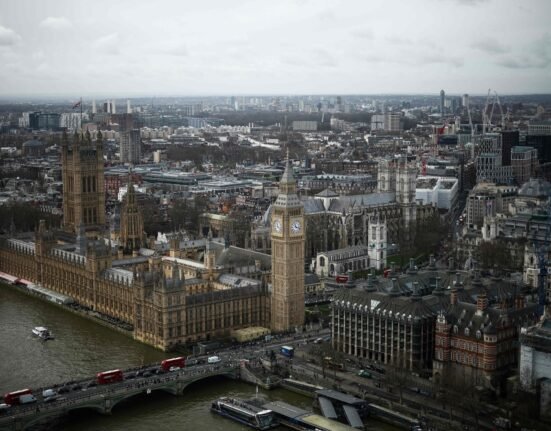If the 2010s and early 2020s were boom times for the art world, the quarter-century mark might be shaping up to be a bust. It was hard to ignore the very public signs of a slowdown in 2024. Annual auction sales of fine art fell 27.3 percent to $10.2 billion—a steeper drop than during the first year of the pandemic—according to Artnet, which tracks the market. Moreover, the total number of works sold remained high, meaning the average price decreased. Even the heaviest hitters among collectors appeared to be playing it safe: Only three lots hammered over $50 million, compared to twice that number in 2023.
There was also a steady drumbeat of business closures, from decades-old mainstays such as Marlborough Gallery, Washburn Gallery, and Mitchell-Innes & Nash to David Lewis Gallery, which shuttered after an impactful 11 years, and several smaller operations focused on emerging artists. One dealer was quoted calling the general commercial contraction “a bloodbath.”
Museums, too, faced bleaker outlooks. Several announced layoffs, including the Brooklyn Museum and the Guggenheim, and others appear to be mounting fewer exhibitions as a cost-cutting strategy. Meanwhile, President Trump and Elon Musk’s Department of Government Efficiency (DOGE) moved to eliminate the entire staff of the Institute of Museum and Library Services and gutted the National Endowment for the Humanities, both of which award grants.

The Brooklyn Museum is one of several institutions that recently announced layoffs.
Christina Horsten/picture alliance via Getty Images
In the spring, just when the industry could have used a break from the gloom, along came Trump’s tariffs, which, coupled with other countries’ retaliatory measures, threaten to put the brakes on international transactions. Imported original artworks themselves remain exempt for now, but art supplies and exhibition catalogs are just some of the categories that will see rising prices. In addition to increased costs, galleries, museums, and fairs all face residual damage, such as fewer foreign visitors. The stock market’s convulsions in reaction to the trade measures are poised to make matters worse, leaving collectors with smaller art budgets.
As if the economic uncertainties weren’t unsettling enough, the current administration’s hostility toward immigrants and political dissent has put cultural exchanges at risk, whether an artist talk or a BFA program stocked with students from far-flung countries—things that many art-world denizens cherish and, until now, took for granted.







